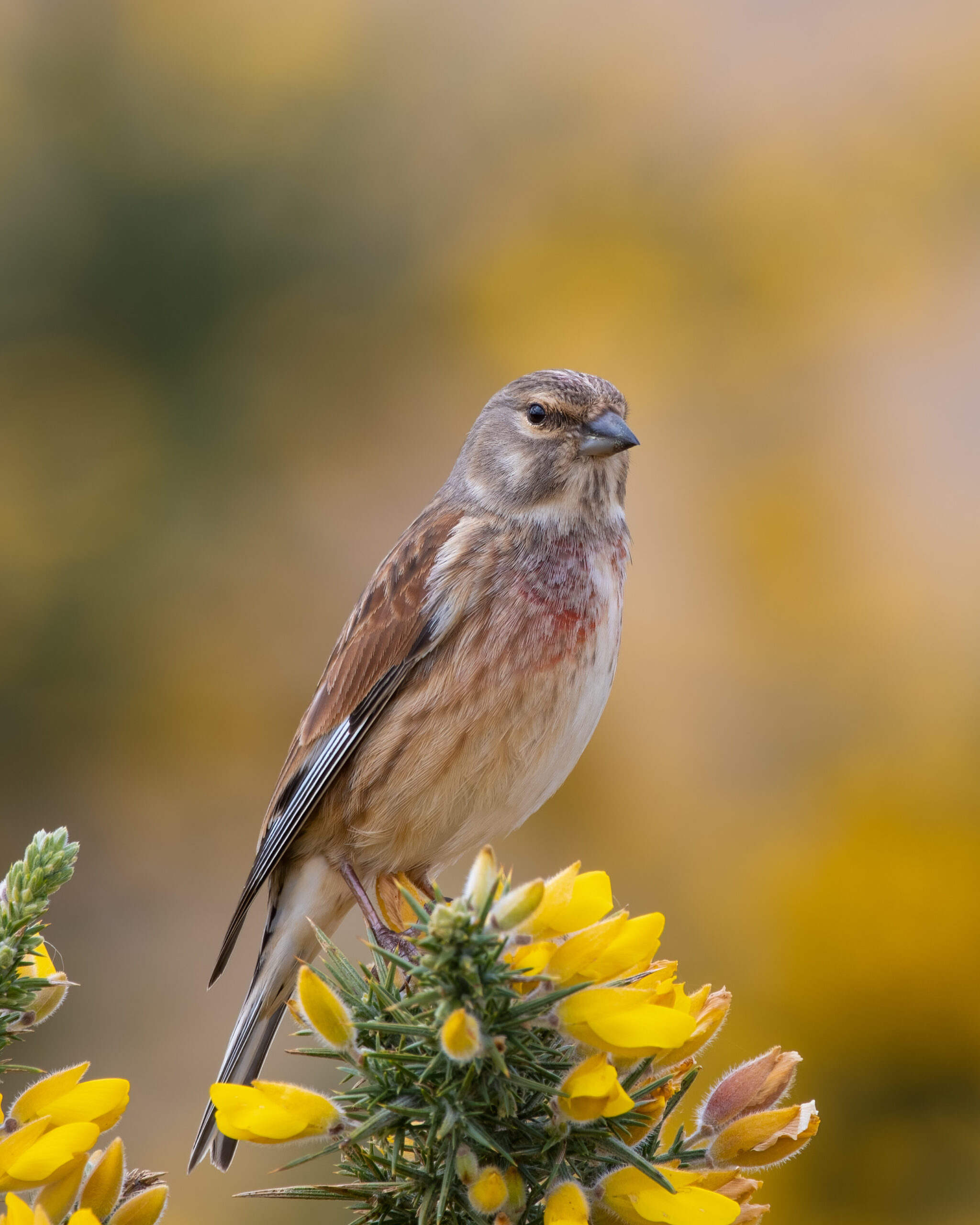In the vast ensemble of the avian world, the Linnet stands out not just for its delicate beauty but also for its delightful song. Known scientifically as Carduelis cannabina, this small songbird brings to life meadows, farmlands, and gardens, delighting birdwatchers and nature enthusiasts with its vibrant presence and serenades.

Donning a muted yet charming palette, the male Linnet is a sight to behold with its rosy-red chest and forehead, set against a backdrop of brown-grey feathers with subtle streaks. Females are more understated in their appearance, featuring more uniform brown plumage, but they share the same graceful demeanor as their male counterparts.
The Linnet’s natural habitat spans across Europe, northern Asia, and North Africa. Preferring open landscapes, these birds are commonly found in heathlands, coastal dunes, gardens, and farmlands, where they flit about in search of seeds, their primary diet.
But it’s not just their appearance that captures the heart. The Linnet’s song is a cascade of melodious trills and chirps, delivered with a fervor that belies its small size. Males, especially during the breeding season, sing from treetops, fences, and other elevated perches, serenading potential mates and staking their claim over territories.
Breeding pairs display a collaborative spirit. They jointly choose nesting sites, often favoring dense shrubs or low trees. While the female takes the lead in constructing the nest and incubating the eggs, the male plays a vigilant role, keeping watch for threats and feeding the female during her nesting period.
Despite their abundance and adaptability, Linnets, like many wild birds, face challenges. Changing agricultural practices, habitat loss, and pesticide use impact their food sources and nesting sites. Conservation initiatives that encourage sustainable farming and habitat preservation are essential for ensuring their continued presence in our landscapes.
Historically, Linnets have been celebrated in literature and folklore. Their delightful song and charming appearance have made them a symbol of love, joy, and pastoral beauty in various cultures.
For those who find solace in nature, the Linnet’s song offers a melodious reprieve from the hustle and bustle of daily life. By setting up bird feeders or cultivating native plants, one can invite these minstrels into gardens, ensuring a daily dose of their enchanting performances.
To sum it up, the Linnet, with its harmonious tunes and delicate beauty, enriches our natural world. As we move forward in our conservation efforts, it’s crucial to ensure that future generations can also enjoy the songs and sights of this remarkable bird.